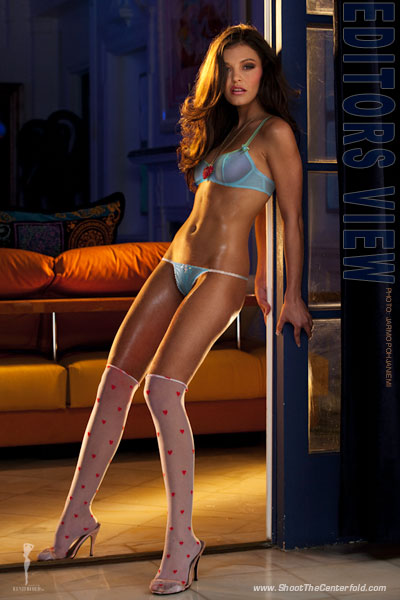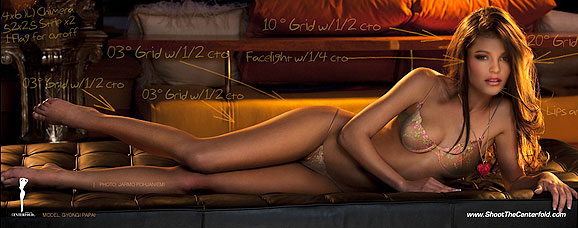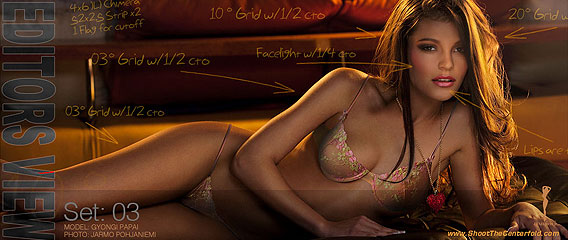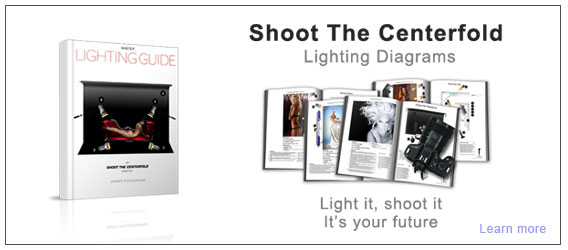Airbrushed Beauty or Photography?
Always being prepared isn’t just for Boy Scouts
I like to believe that today’s photography is more than just pressing the shutter button. Pretty much like in the old days when you went into the darkroom yourself and developed your own images. It’s very similar today; you have just swapped the good ol’ chemically saturated room with red bulb to a computer, which now serves as your darkroom. After all, the images we create are our babies .. well, creations. And if you do care to consider them and your creations or babies, then feed them well because they will tell a story about your photography and skill set.
Think about what the editors want to see, and give him your best performance possible. Because when you deliver, you will always be remembered as the one brings results and no headaches.
 Editors like to tell you anything that gets you pumped up and motivated to do your shoot. They like photographers who are hungry and gung ho because they know that you will do whatever it takes to get the job done. When you deliver top-notch materials for any editor, you also make him look good in front of his bosses – it’s a win-win deal.
Editors like to tell you anything that gets you pumped up and motivated to do your shoot. They like photographers who are hungry and gung ho because they know that you will do whatever it takes to get the job done. When you deliver top-notch materials for any editor, you also make him look good in front of his bosses – it’s a win-win deal.
One thing I do want to bring to the discussion here (which we can talk about until we drop) is airbrushing the images. This really has become “Uncle Adobe’s” world, even though the pro-level industry would like to think differently. This doesn’t mean that Photoshop isn’t any good, but it does mean using Photoshop the way editors want and not the way buxom, plastic-coated Barbie dolls are supposed to look like. I see a lot of photography been fixed in Photoshop, which is okay, but since we cannot photograph with Photoshop, we should invest more knowledge of how to do it right in the camera because editors do NOT want airbrushed images.
Editors in major publications want to reserve that right for their editing team, not yours. I always look at images that are often excessively front-lighted and then fixed later in post. Take into consideration that there should be different levels of depth in your images (unless you are shooting against flat wall). Light every space differently or separately. This way, you create different layers of elements in your image and depending on what kind of photography you are doing; it always works well in classic and traditional lighting scenarios.
When you light well, you don’t need to use Photoshop to fix it. And this is why editors will fall in love with you.
 For example, here is an image sample that I shot of a European Playmate that demonstrates good skin completely intact and Photoshop free. This image is directly from the camera and this is what editors want in delivery. Again, it bears repeating, light your images so that you don’t have to go fix them after the shoot. Let the editor do any changes, if required. When you learn to light beyond foreground and subject, you open yourself up to a whole new world and unlimited visual possibilities.
For example, here is an image sample that I shot of a European Playmate that demonstrates good skin completely intact and Photoshop free. This image is directly from the camera and this is what editors want in delivery. Again, it bears repeating, light your images so that you don’t have to go fix them after the shoot. Let the editor do any changes, if required. When you learn to light beyond foreground and subject, you open yourself up to a whole new world and unlimited visual possibilities.
Think about your set as a garage when you have all your tools; you are about to start hammering and building a support for your outside tree. You don’t have to even think about where your nails and hammer are and how you’re going to use them. You can automatically and knowingly locate the tools and whatever is necessary to get the job done. The same goes for photography; when you know your lighting, you don’t have to think twice, you just do it. The same also applies to the photo equipment that you are using.
Lighting is the key element on your shoots regardless if it’s natural or studio lighting. When you learn how to light without hesitation, you find yourself in the driver’s seat and capable of doing anything. Bring the sexy out with lighting!
Do I consider myself ready and graduated? No, I do not. Why? Because the day when you stop studying and learning, you have reached your ceiling and stopped growing.
Jarmo Pohjaniemi





















I totally agree with you…
Im happy and proud that I had a chance to assist you…this helped me a lot…thx for that…